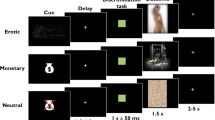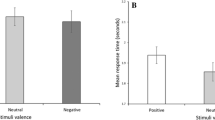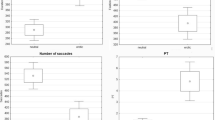Abstract
Men tend to have greater positive responses than women to explicit visual erotic stimuli (EVES). However, it remains unclear, which brain network makes men more sensitive to EVES and which factors contribute to the brain network activity. In this study, we aimed to assess the effect of sex difference on brain connectivity patterns by EVES. We also investigated the association of testosterone with brain connection that showed the effects of sex difference. During functional magnetic resonance imaging scans, 14 males and 14 females were asked to see alternating blocks of pictures that were either erotic or non-erotic. Psychophysiological interaction analysis was performed to investigate the functional connectivity of the nucleus accumbens (NA) as it related to EVES. Men showed significantly greater EVES-specific functional connection between the right NA and the right lateral occipital cortex (LOC). In addition, the right NA and the right LOC network activity was positively correlated with the plasma testosterone level in men. Our results suggest that the reason men are sensitive to EVES is the increased interaction in the visual reward networks, which is modulated by their plasma testosterone level.
This is a preview of subscription content, access via your institution
Access options
Subscribe to this journal
Receive 8 print issues and online access
$259.00 per year
only $32.38 per issue
Buy this article
- Purchase on Springer Link
- Instant access to full article PDF
Prices may be subject to local taxes which are calculated during checkout



Similar content being viewed by others
References
Sowell ER, Peterson BS, Kan E, Woods RP, Yoshii J, Bansal R et al. Sex differences in cortical thickness mapped in 176 healthy individuals between 7 and 87 years of age. Cerebral Cortex 2007; 17: 1550–1560.
Blakemore SJ . Imaging brain development: the adolescent brain. NeuroImage 2012; 61: 397–406.
Gong G, He Y, Evans AC . Brain connectivity: gender makes a difference. Neuroscientist 2011; 17: 575–591.
Diekhof EK, Keil M, Obst KU, Henseler I, Dechent P, Falkai P et al. A functional neuroimaging study assessing gender differences in the neural mechanisms underlying the ability to resist impulsive desires. Brain Res 2012; 1473: 63–77.
Hurlbert AC, Ling Y . Biological components of sex differences in color preference. Curr Biol 2007; 17: R623–R625.
Hull EM, Dominguez JM . Sexual behavior in male rodents. Hormones Behav 2007; 52: 45–55.
Markowski VP, Hull EM . Cholecystokinin modulates mesolimbic dopaminergic influences on male rat copulatory behavior. Brain Res 1995; 699: 266–274.
Pfaus JG, Damsma G, Nomikos GG, Wenkstern DG, Blaha CD, Phillips AG et al. Sexual behavior enhances central dopamine transmission in the male rat. Brain Res 1990; 530: 345–348.
Nyby J, Matochik JA, Barfield RJ . Intracranial androgenic and estrogenic stimulation of male-typical behaviors in house mice (Mus domesticus). Hormones Behav 1992; 26: 24–45.
Wood RI . Estradiol, but not dihydrotestosterone, in the medial amygdala facilitates male hamster sex behavior. Physiol Behav 1996; 59: 833–841.
Klucken T, Schweckendiek J, Merz CJ, Tabbert K, Walter B, Kagerer S et al. Neural activations of the acquisition of conditioned sexual arousal: effects of contingency awareness and sex. J Sexual Med 2009; 6: 3071–3085.
Hamann S, Herman RA, Nolan CL, Wallen K . Men and women differ in amygdala response to visual sexual stimuli. Nat Neurosci 2004; 7: 411–416.
Sabatinelli D, Flaisch T, Bradley MM, Fitzsimmons JR, Lang PJ . Affective picture perception: gender differences in visual cortex? Neuroreport 2004; 15: 1109–1112.
Habermeyer B, Handel N, Lemoine P, Klarhofer M, Seifritz E, Dittmann V et al. LH-RH agonists modulate amygdala response to visual sexual stimulation: a single case fMRI study in pedophilia. Neurocase 2012; 18: 489–495.
Park K, Seo JJ, Kang HK, Ryu SB, Kim HJ, Jeong GW . A new potential of blood oxygenation level dependent (BOLD) functional MRI for evaluating cerebral centers of penile erection. Int J Impotence Res 2001; 13: 73–81.
Carlezon WA Jr., Thomas MJ . Biological substrates of reward and aversion: a nucleus accumbens activity hypothesis. Neuropharmacology 2009; 56: 122–132.
Demos KE, Heatherton TF, Kelley WM . Individual differences in nucleus accumbens activity to food and sexual images predict weight gain and sexual behavior. J Neurosci 2012; 32: 5549–5552.
O'Reilly JX, Woolrich MW, Behrens TE, Smith SM, Johansen-Berg H . Tools of the trade: psychophysiological interactions and functional connectivity. Social Cognitive Affective Neurosci 2012; 7: 604–609.
Lang PJ, Bradley MM, Cuthbert BN International Affective Picture System (IAPS) Affective Ratings of Pictures and Instruction Manual Technical report A-8 In. University of Florida: : Gaineville, FL, 2008.
Walter M, Stadler J, Tempelmann C, Speck O, Northoff G . High resolution fMRI of subcortical regions during visual erotic stimulation at 7T. Magma 2008; 21: 103–111.
Seo Y, Jeong B, Kim JW, Choi J . The relationship between age and brain response to visual erotic stimuli in healthy heterosexual males. Int J Impotence Res 2010; 22: 234–239.
Jenkinson M, Beckmann CF, Behrens TE, Woolrich MW, Smith SM . Fsl. NeuroImage 2012; 62: 782–790.
Cox RW . AFNI: software for analysis and visualization of functional magnetic resonance neuroimages. Computers Biomed Res 1996; 29: 162–173.
Koukounas E, Over R . Habituation of male sexual arousal: effects of attentional focus. Biol Psychol 2001; 58: 49–64.
Ponseti J, Bosinski HA, Wolff S, Peller M, Jansen O, Mehdorn HM et al. A functional endophenotype for sexual orientation in humans. NeuroImage 2006; 33: 825–833.
Walter M, Bermpohl F, Mouras H, Schiltz K, Tempelmann C, Rotte M et al. Distinguishing specific sexual and general emotional effects in fMRI-subcortical and cortical arousal during erotic picture viewing. NeuroImage 2008; 40: 1482–1494.
Grill-Spector K, Kourtzi Z, Kanwisher N . The lateral occipital complex and its role in object recognition. Vision Res 2001; 41: 1409–1422.
Kourtzi Z, Kanwisher N . Representation of perceived object shape by the human lateral occipital complex. Science 2001; 293: 1506–1509.
Gervais SJ, Vescio TK, Forster J, Maass A, Suitner C . Seeing women as objects: the sexual body part recognition bias. Eur J Soc Psychol 2012; 42: 743–753.
Rupp HA, Wallen K . Sex differences in response to visual sexual stimuli: a review. Arch Sex Behav 2008; 37: 206–218.
Lang PJ, Bradley MM, Fitzsimmons JR, Cuthbert BN, Scott JD, Moulder B et al. Emotional arousal and activation of the visual cortex: an fMRI analysis. Psychophysiology 1998; 35: 199–210.
Saint-Cyr JA, Ungerleider LG, Desimone R . Organization of visual cortical inputs to the striatum and subsequent outputs to the pallido-nigral complex in the monkey. J Comp Neurol 1990; 298: 129–156.
Shuler MG, Bear MF . Reward timing in the primary visual cortex. Science 2006; 311: 1606–1609.
Serences JT . Value-based modulations in human visual cortex. Neuron 2008; 60: 1169–1181.
Apitz T, Bunzeck N . Reward modulates the neural dynamics of early visual category processing. NeuroImage 2012; 63: 1614–1622.
Pessoa L, Engelmann JB . Embedding reward signals into perception and cognition. Front Neurosci 2010; 4: 17.
Aharon I, Etcoff N, Ariely D, Chabris CF, O'Connor E, Breiter HC . Beautiful faces have variable reward value: fMRI and behavioral evidence. Neuron 2001; 32: 537–551.
Chatterjee A, Thomas A, Smith SE, Aguirre GK . The neural response to facial attractiveness. Neuropsychology 2009; 23: 135–143.
Filbey FM, Myers US, Dewitt S . Reward circuit function in high BMI individuals with compulsive overeating: similarities with addiction. NeuroImage 2012; 63: 1800–1806.
Erk S, Spitzer M, Wunderlich AP, Galley L, Walter H . Cultural objects modulate reward circuitry. Neuroreport 2002; 13: 2499–2503.
Packard MG, Cornell AH, Alexander GM . Rewarding affective properties of intra-nucleus accumbens injections of testosterone. Behav Neurosci 1997; 111: 219–224.
Abramov I, Gordon J, Feldman O, Chavarga A . Sex & vision I: spatio-temporal resolution. Biol Sex Differ 2012; 3: 20.
Phoenix CH, Goy RW, Gerall AA, Young WC . Organizing action of prenatally administered testosterone propionate on the tissues mediating mating behavior in the female guinea pig. Endocrinology 1959; 65: 369–382.
Baum MJ . Differentiation of coital behavior in mammals: a comparative analysis. Neurosci Biobehav Rev 1979; 3: 265–284.
Wallen K . Hormonal influences on sexually differentiated behavior in nonhuman primates. Front Neuroendocrinol 2005; 26: 7–26.
Sisk CL, Zehr JL . Pubertal hormones organize the adolescent brain and behavior. Front Neuroendocrinol 2005; 26: 163–174.
Schulz KM, Molenda-Figueira HA, Sisk CL . Back to the future: the organizational-activational hypothesis adapted to puberty and adolescence. Hormones Behav 2009; 55: 597–604.
Chung WS, Lim SM, Yoo JH, Yoon H . Gender difference in brain activation to audio-visual sexual stimulation; do women and men experience the same level of arousal in response to the same video clip? Int J Impotence Res 2013; 25: 138–142.
Abler B, Kumpfmuller D, Gron G, Walter M, Stingl J, Seeringer A . Neural correlates of erotic stimulation under different levels of female sexual hormones. PloS One 2013; 8: e54447.
Montoya ELS, Hernandez L, Barreto-Estrada JL, Ortiz JG, Jorge JC . The testosterone metabolite 3 alpha-diol enhances female rat sexual motivation when infused in the nucleus accumbens shell. J Sexual Med 2010; 7: 3598–3609.
Acknowledgements
This work was supported by grants (NRF-2012R1A1A2001 and NRF-2006-2005372 to B Jeong) from National Research Foundation and in part by the KAIST Future Systems Healthcare Project from the Ministry of Science, ICT and Future Planning (N01130009, N01130010, G04110085 to B Jeong).
Author information
Authors and Affiliations
Corresponding author
Ethics declarations
Competing interests
The authors declare no conflict of interest.
Additional information
Supplementary Information accompanies the paper on International Journal of Impotence Research website
Supplementary information
Rights and permissions
About this article
Cite this article
Lee, S., Jeong, B., Choi, J. et al. Sex differences in interactions between nucleus accumbens and visual cortex by explicit visual erotic stimuli: an fMRI study. Int J Impot Res 27, 161–166 (2015). https://doi.org/10.1038/ijir.2015.8
Received:
Revised:
Accepted:
Published:
Issue Date:
DOI: https://doi.org/10.1038/ijir.2015.8
This article is cited by
-
Neural Responses to Sexual Stimuli in Heterosexual and Homosexual Men and Women: Men’s Responses Are More Specific
Archives of Sexual Behavior (2020)
-
Neural Correlates of Sexual Orientation in Heterosexual, Bisexual, and Homosexual Men
Scientific Reports (2017)



